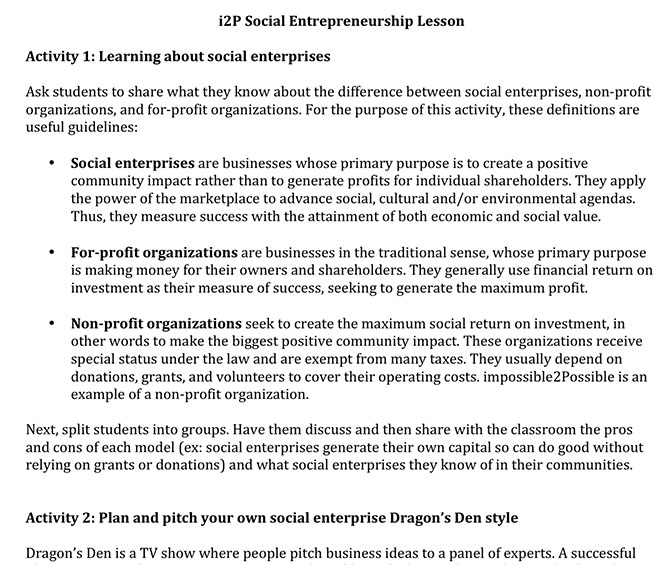Classroom Activities For Teachers by Teachers
Topic Focus
Practical money skills are important if we are to get by in life. Learning the basics begins with our knowledge of basic financial terms, understanding how you as an individual view and handle money, and learning how to set financial goals and overcome obstacles that might get in our way when we try and save.
Generations Interview
How and what did you learn about money from your families when you were young? What role did it play in shaping how you view and handle money now?
Vocabulary Jeopardy
Introduction:
A good understanding of how money and finances work is fundamental to anyone. Providing a solid financial literacy foundation to students is a step towards leading them to be financially responsible adults. Beginning with the basics is a good place to start. This lesson begins teaching students some basic financial literacy terminology.
Objectives:
Activity 1: VOCABULARY JEOPARDY GAME
FINANCIAL LITERACY VOCABULARY
- BUDGET
A plan for managing money, dividing up expected income and expenses among spending and saving options based on personal goals during a given time period. - INVEST
Expend money with the expectation of achieving a profit or material result by putting it into financial schemes, shares, or property, or by using it to develop a commercial venture. - INTEREST
Money paid regularly at a particular rate for the use of money lent, or for delaying the repayment of a debt. - TAXES
A compulsory payment by individual/organizations to the government; fees placed on income, property, or goods to support government programs. - GROSS PROFIT
A company's revenue minus its cost of goods sold. - NET PROFIT
The actual profit after working expenses not included in the calculation of gross profit have been paid. - PENALTY
An amount agreed in advance if payment or performance is not made on time - COMPOUND INTEREST
Interest calculated on the initial principal and also on the accumulated interest of previous periods of a deposit or loan. - TRACK SPENDING
The process in which a business determines whether projects such as building a new plant or investing in a long-term venture are worth pursuing. - ANNUAL FEE
The amount that credit card companies charge for the use of a credit card. - ASSESTS
What a person owns, such as cash, stocks, bonds, real estate, and personal possessions. - CAPITAL
The value of personal items that one owns, including savings, investments, and property, one of three factors used in credit scoring. The value of personal items that one owns, including savings, investments, and property, one of three factors used in credit scoring. - YIELD
The profit from an investment - STOCK
An investment that makes the investor a part owner of a company. - SAVINGS
Money set aside for short-term goals. - RATE OF RETURN
How fast money in savings account or investment grows. - PROFIT
The difference between the costs required to create a product or supply a service that can be bought with it. - OPPORTUNITY COST
Whenever choices are made, the cost of something expressed in terms of what had to be given up to obtain it. The resources used to satisfy one goal that cannot be used for another, i.e., weighing of one alternative against another rather than merely considering the cash price or value of a specific good or service. - LIQUIDITY
The ease with which an asset can be converted to cash without serious loss. - INSURANCE PREMIUM
The payment a person makes to an insurance company in exchange for its promise of protection and help.
Discuss:
- What additional knowledge did you get out of playing the game?
- Is it important to know financial terminology? Why?
- What additional terms could be applied to the game? Why?
- How many words did you actually know the definitions to before playing?
- What term would you like to learn more about?
- Do you think that the general population understand the basic terms? Why or why not?
- What could help people learn the basics of financial literacy terms?
Saving Hurdles
Introduction: As we move forward in life and attempt to reach our goals, it is likely that we are going to come across a number of obstacles. By better understanding how to jump over those hurdles and finding ways to manage those obstacles is the key to success. The goal of saving money is no different. Reaching financial goals is influenced on how each individual deals with the roadblocks.
Objectives:
- To use a fun little activity as a hook to begin a discussion on the topic.
- To understand that the hurdles we encounter in life and how we overcome them are no different than how we deal with obstacles in saving money.
- To understand the possible obstacles that we might encounter when trying to save money.
- The purpose of the game is to work in teams to save money in a bank.
Activity 1: Tag it or Save it
Introduction to activity: Lead a short discussion about saving and earning money. Prompt discussion about saving and record answers on board. Questions should include: How would you save money; where would you save it; what banks or credit unions are available in your community; why would you save your money in a bank/credit union and not your wallet?
Materials Needed:
- 1 Tally Sheet per team
- 1 pencil per team
- A variety of objects with identified values (bean bags, tennis balls..)
- 3 hula hoops
- CD player/music with a money theme, or a whistle to signal end of play
- A gymnasium or outdoor field
- Chart paper and markers
- Review the basic principles of saving and explain some of the security features and advantages of saving money in a bank or credit union as opposed to keeping it at home.
- Draw a visual of 2 services offered by banks and explain the benefits and any drawbacks related to these services. (Provide further context in a lesson the day before, if needed.)
- Using the bank names generated by the students in the earlier question, divide class into 3-4 banks or, alternately, have student groups create their own bank names to set up for the game.
Setting up to play the game:
- Divide students into 3-4 teams of 6-8 students.
- Explain that the goal of the game is to save at least $100 in the bank.
- Set out 100+ small objects such as bean bags, popsicle sticks, glasses, tennis balls, dice, or anything that can be picked up easily and carried.
- Spread these items across the floor beyond the blue line (the centre point) and/or a distance from where each group lines up to play. (Note: Be sure to have enough items over the blue line so that all teams can meet their savings goal.)
- Hand out to each group the legend which describes how much each item is worth
- Give each team a hula hoop that will represent their bank.
- Assign a banker within each group. The banker receives a tally sheet that will be used to add up the value of the items that runners bring back to the bank.
- Prior to starting the game, select three taggers and have each wear pinnies. These taggers are not associated with the groups and will simply attempt to tag the runners on their way out to collect the “money” located on the other side of the blue line.
Playing the game:
Discuss:
- Do you think it is a good idea for people to put money in the bank and save? Explanation can include general information about earning interest and how that works. (Additional context may need to be provided to explain the concept of interest.)
- What do you think is the biggest concern or hurdle for people when it comes to saving money?
- The tally sheet helped you organize the amount of money that you saved. What kinds of documents do banks and credit unions offer to help people keep track of their money?
- What should people do with their banking documents when they receive them from the bank?
Resources:
Entrepreneurship - Planning and Pitching Ideas

Open Lesson (pdf)
Explore Additional Financial Literacy Classroom Activities Here







